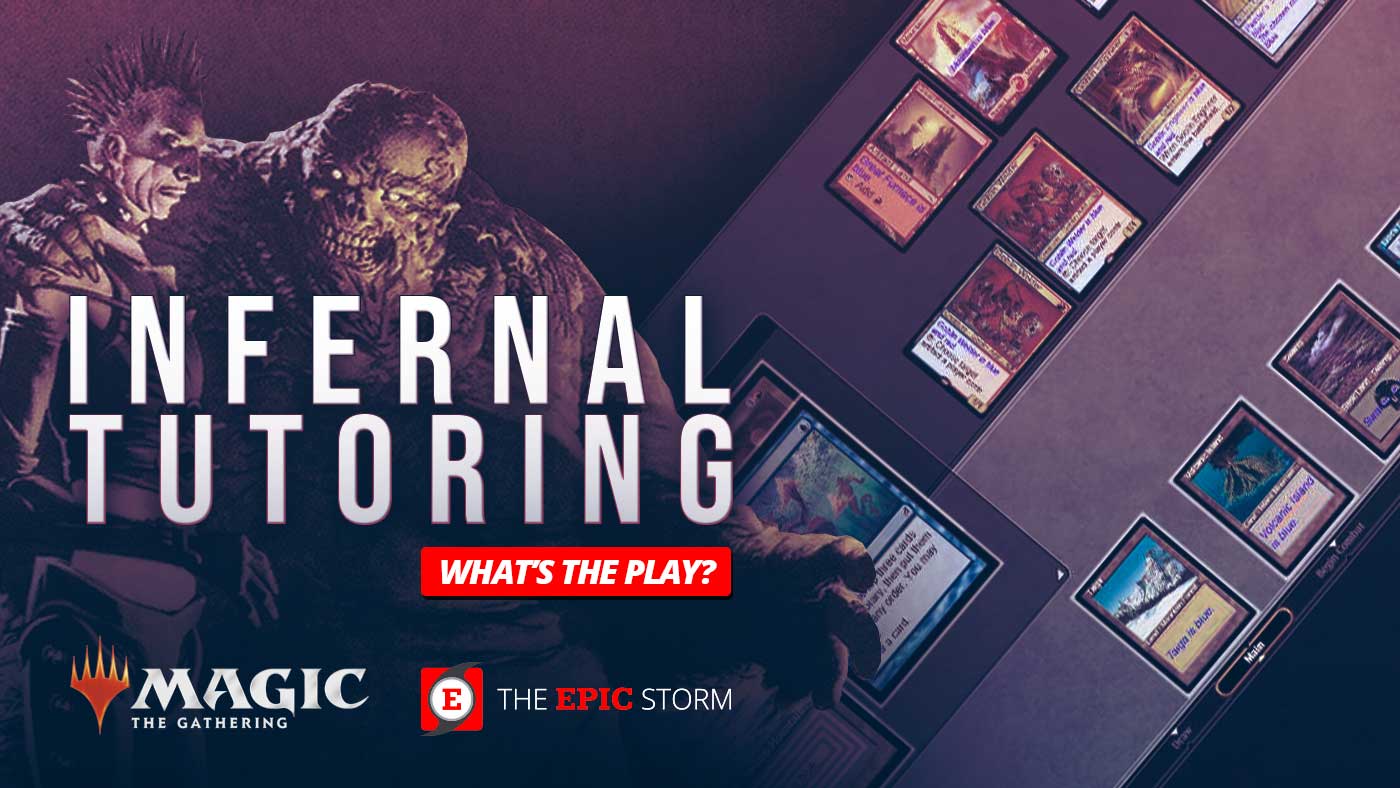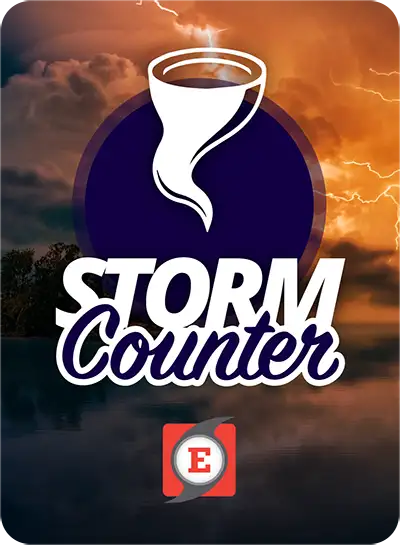
Special GuestTom Hepp (Negator77):
Tom is a Legacy and dog lover from just outside of Philadelphia. He has had a few notable finishes over the past year including winning an SCG Legacy Classic and making the top 8 of both MTGO Legacy Playoff events. After a few years of running his trusty BUG Depths list, rumor has it that he may be branching out and trying to learn something a little more EPIC.
Deck List
Main Deck
Sideboard
SITUATION #1 - Dredge
In our first scenario, we are in game one against Dredge on the draw. Dredge can be a very tough matchup for The EPIC Storm because Dredge is extremely explosive, while also being able to efficiently leverage Cabal Therapy to rip our hand to shreds. Before the printing of Echo of Eons, Burning Wish hands were almost unplayable because Empty the Warrens doesn't pair well against a deck that can make an army of 2/2 Zombie Tokens very quickly and efficiently with Bridge from Below. Echo of Eons forces all of the cards in each player's graveyard to be shuffled back into each player's library and gives both players a fresh start with seven cards. While this line can definitely backfire, it gives us a whole new angle of attack, which is always exciting!In this scenario, our opponent played a Cephalid Coliseum and then played Careful Study, discarding a pair of Ichorid. After breathing a huge sigh of relief at the fact that there were no creatures with Dredge in our opponent's graveyard, I proceeded to cast Thoughtseize. Our opponent revealed a Breakthrough, a Cabal Therapy, two copies of Street Wraith, and a City of Brass. What would you take here, and why?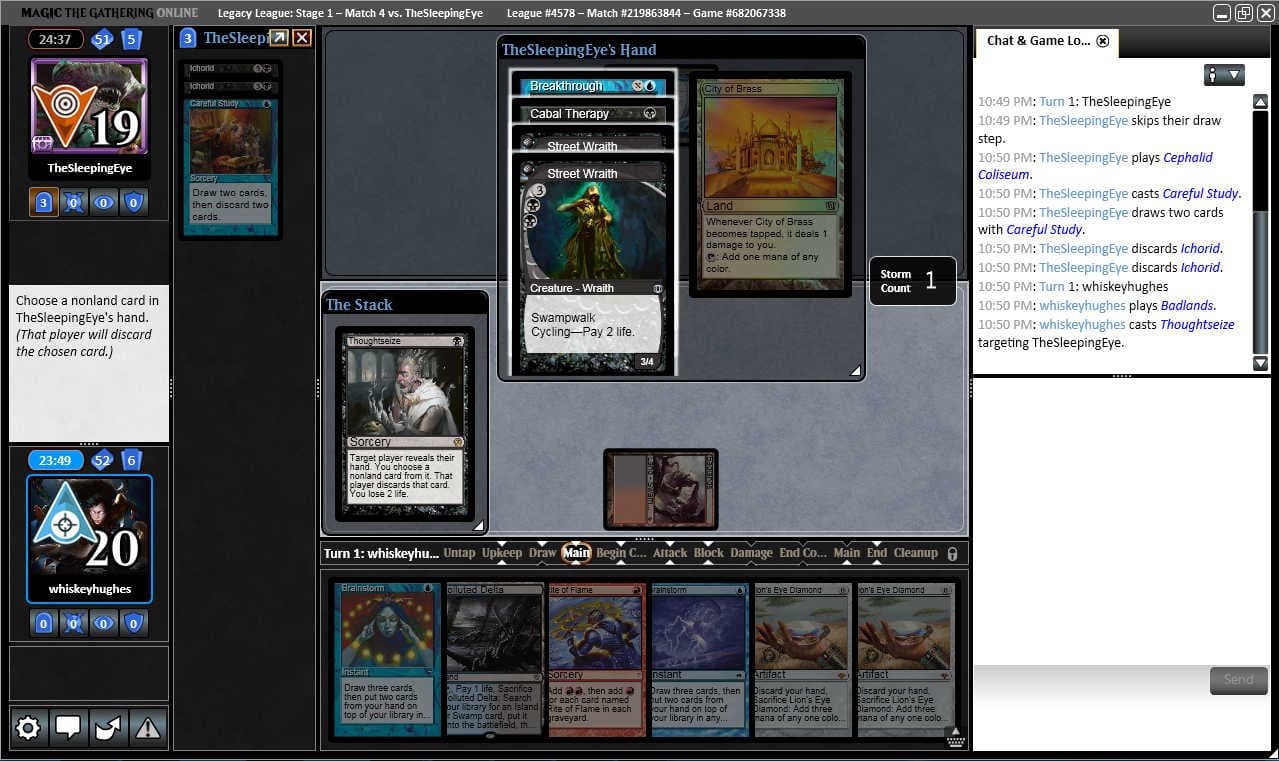
SITUATION #2 - Red Prison
Our second scenario is against Red Prison! With the insanely high impact that Wrenn and Six has had on Legacy, more decks are playing a very greedy mana base because of the mana consistency that Wrenn and Six brings. When we see the meta shift in this direction, there is usually a rise in Red Prison decks to combat these strategies. On the surface, any deck that plays Chalice of the Void and Trinisphere seems like a bad matchup for The EPIC Storm. Fortunately for us, we have a lot of game against Red Prison. Thanks to cards like Burning Wish, we can grab sideboard cards like Pulverize in game one. This makes Blood Moon much worse against us, as sometimes turning one of our lands into a Mountain is exactly what we need to deal with our opponent's artifact hate.HOW I SIDEBOARDED:
-2 Defense Grid, -2 Ponder, +4 Echoing Truth
In this scenario, we are in game two on the Draw. We were fortunate enough to make our opponent discard their Trinisphere, and then make fourteen Goblin Tokens on turn two. Our opponent played a Goblin Rabblemaster, and then followed up with a Legion Warboss on turn three. When playing Storm strategies, sometimes combat math is a skill that isn't developed or focused on. This can cause players to overthink combat scenarios and throw-away games that could have been won. Our opponent is currently attacking with three 1/1 Goblin Tokens. How would you block this turn, and then what would your attacks look like on the following turn?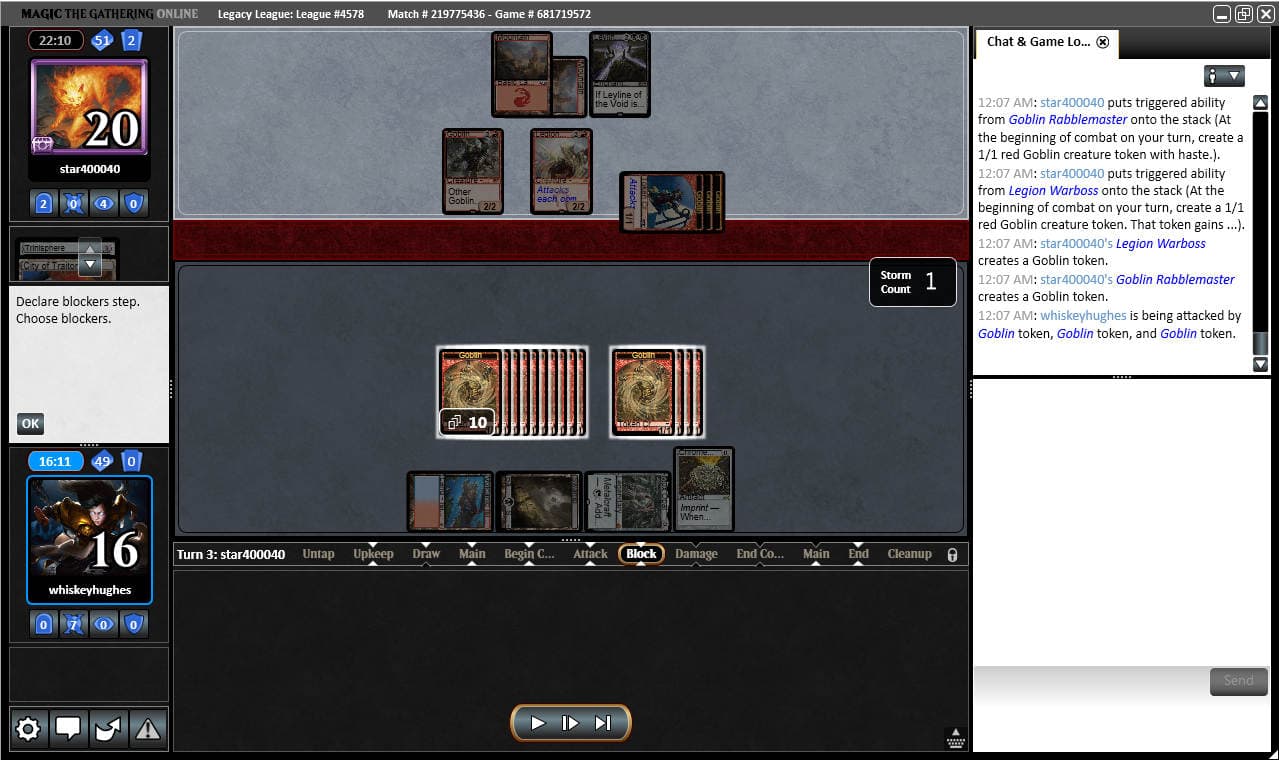
SITUATION #3 - Echo Storm
In our third scenario, we are playing against a new deck called Echo Storm. Echo Storm is a very interesting take on Storm, that looks to get Echo of Eons into the graveyard with either Lion's Eye Diamond or Entomb. From there, the Echo Storm player either draws seven cards and fizzles, or they storm off and kill their opponent. To help mitigate the risk of an opponent drawing seven cards from Echo of Eons, Echo Storm plays Narset, Parter of Veils. Narset, Parter of Veils essentially changes the Oracle text on Echo of Eons to read, "Discard your hand, shuffle your graveyard into your library, draw seven cards, your opponent discards their hand, shuffles their graveyard into their library and draws one card." While Echo Storm's primary win condition is Tendrils of Agony, the deck also plays Monastery Mentor, which can get out of hand very quickly if not dealt with immediately.In this scenario, we are currently on turn three. In the two turns prior, our opponent made us draw seven cards, and then played a Narset, Parter of Veils. We came close to dying, but our opponent was one mana short of casting an Entomb for Echo of Eons to continue casting spells. Lucky for us, variance gave us a hand that could Thoughtseize our opponent, taking their Entomb, and then cast Ad Nauseam with a lot of mana floating and the ability to play a Land for turn. Unlucky for us, we bricked pretty hard on the Ad Nauseam. I was so excited about the fact that our opponent fizzled, that I missed the fact that I had a natural Storm kill, and ironically we both fizzled. Or did we? How do you either win or put yourself in a winning situation?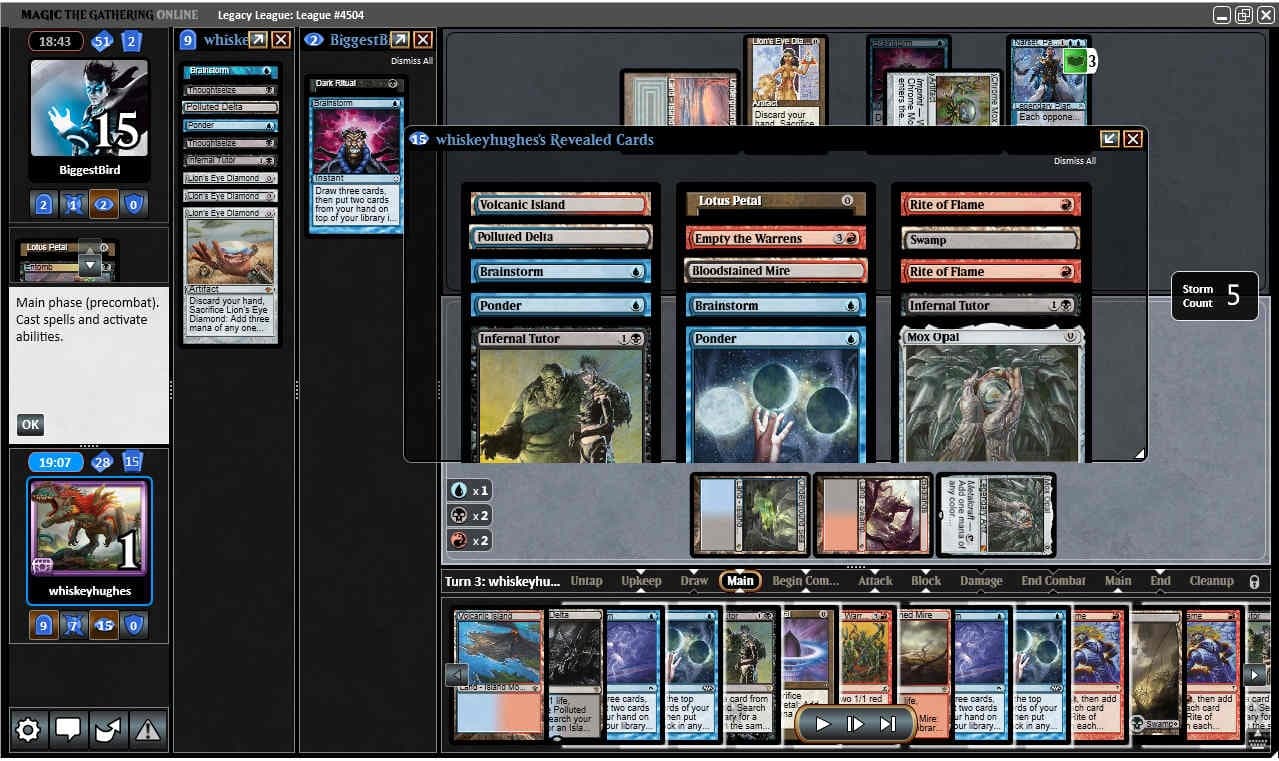 I’ve been consistently impressed by how incredible Mox Opal has been. My initial fear with playing it was Karn, The Great Creator. While Karn, The Great Creator is terrifying, I have found that the London Mulligan has helped me have more consistent turn one plays. I think that one of the keys for success in the post London Mulligan world is to really take advantage of mulliganing. While that is easier on Magic Online because you just click a button, it is something that should be practiced while playing paper magic as well.Keep storming on!
I’ve been consistently impressed by how incredible Mox Opal has been. My initial fear with playing it was Karn, The Great Creator. While Karn, The Great Creator is terrifying, I have found that the London Mulligan has helped me have more consistent turn one plays. I think that one of the keys for success in the post London Mulligan world is to really take advantage of mulliganing. While that is easier on Magic Online because you just click a button, it is something that should be practiced while playing paper magic as well.Keep storming on! 